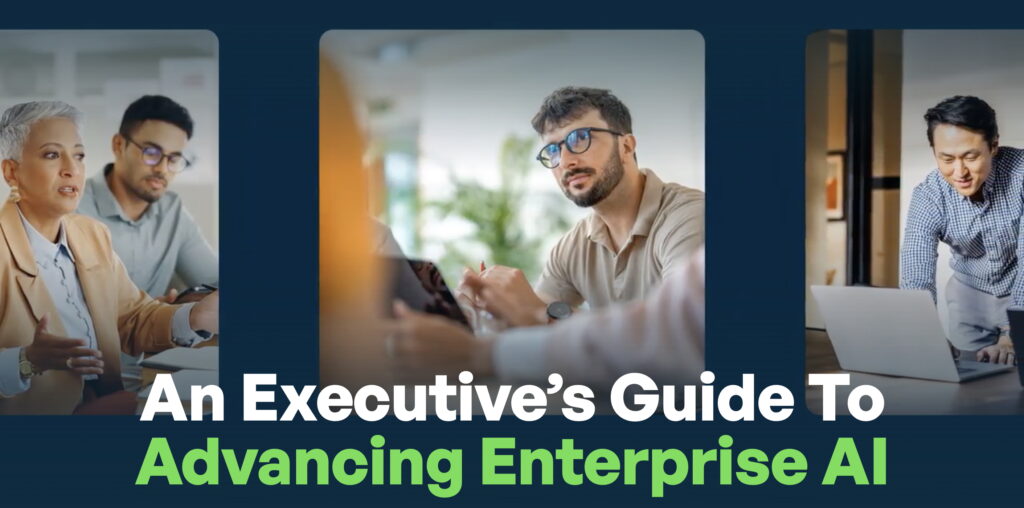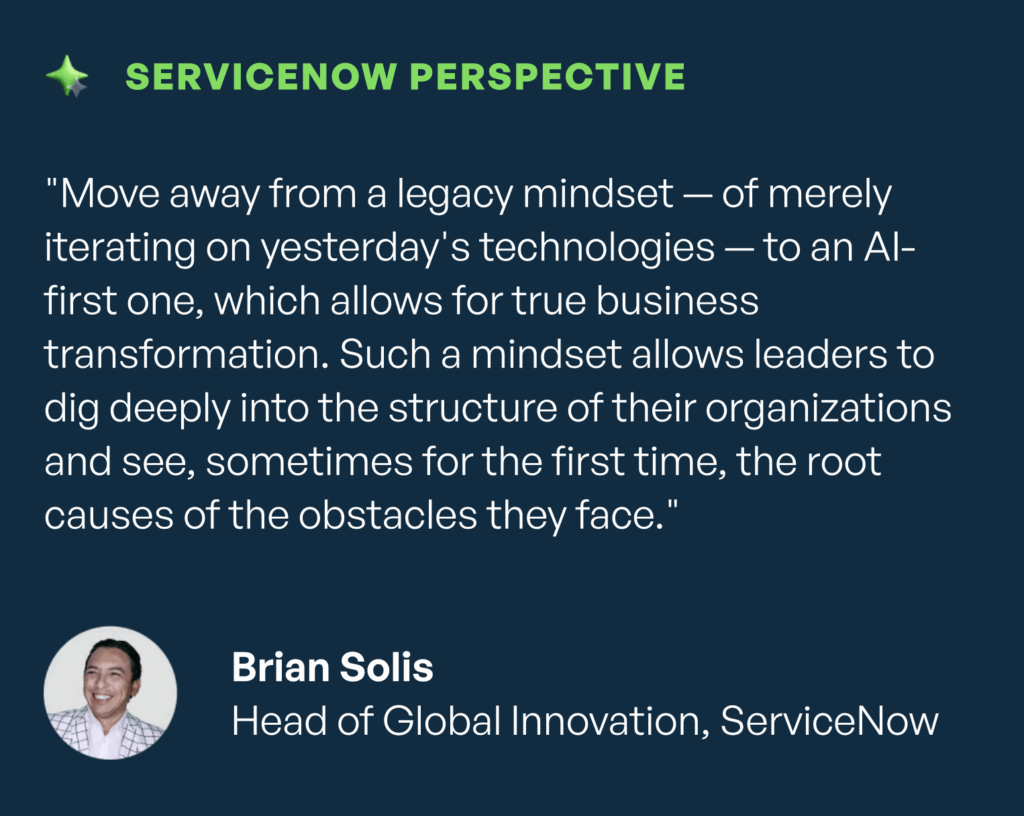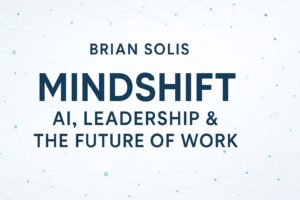
From 2023-2024, I studied how companies were and weren’t evolving in their adoption of generative AI. That research led to a framework for tracking enterprise AI maturity across eight pillars:
- Vision and Strategy
- Leadership
- Data Governance
- AI Governance
- Talent, Skills, and Development
- Workflows
- Responsible AI
- Measures
In partnership with Richard Murphy and René Stranghoner, we turned a large and complicated spreadsheet into what ultimately became the ServiceNow AI Index. Launched initially in 2024 and again in 2025, we now have two years of insights that offer an idea of how companies are evolving, with some starkly maturing faster than others. We call these faster-moving companies AI Pacesetters.
To help other companies follow in the paths of their peers, we analyzed their steps and what they do differently. The result is this AI Pacesetter Playbook published in Forbes.
There’s a big difference between having a vision and being visionary. It all comes down to why you should do AI rather than how you should do AI,” ServiceNow Chief Innovation Officer Dave Wright told customers in May at the Knowledge 2025 event in Las Vegas.
Pacesetters understand this nuance better than most. They have a vision for what they want their organizations to achieve and use AI as a tool to get there.
Here’s what they do differently…
Lead With An Innovation Mindset
While ingenuity gives pacesetters an edge, not all companies are set up for out-of-the-box thinking.
“For years, we have been taught to follow the rules to achieve goals — to not challenge convention,” Brian Solis, head of global innovation at ServiceNow, said at Knowledge. “Companies are meant to operate efficiently and meant to scale. They fight against risk.”
But AI is challenging the very nature of what it means to be an organization, he continued. Pacesetters are recognizing this shift and building AI innovation centers to nurture creativity.
Thinking expansively led a major insurance business to improve IT productivity and accelerate the creation of its service catalog. Each item in such a catalog — like installing a software patch — usually has a multi-step workflow. Using ServiceNow tools, the company automated some of the most significant ones for the first time.
When companies don’t have the option to dedicate more people or investment to fix a problem or chase an opportunity, they can turn to AI to identify smarter ways to deliver services.
56% of AI pacesetters strongly agree they are operating with an AI vision that is clear and shared,
compared with 30% of others.
Take a platform approach
Pacesetters realize that consolidating departments onto a common platform unites teams, collapses information silos and fuels innovation, Wright said. It decreases the costs of harnessing and accessing data and instead enables employees to focus on the actual tasks at hand.
66% of AI pacesetters use an enterprise-wide platform with built-in AI capabilities, compared to 46% of others.
Focus on talent – Expand Your Hiring Criteria Beyond Technical Ability
Organizations require technical expertise to understand how to build models. But they also need creative thinkers who can use AI to solve customer problems. Increasingly, tools like Now Assist, which is part of the ServiceNow platform, are making it easier to build autonomous chatbots, request summaries and code without dev expertise.
50% of pacesetters agree they have the right mix of talent to execute their AI strategy
compared with 29% of others.
Prioritize AI governance – Set Clear Rules, And Your Employees Will Thank You
Clear risk management guidelines help employees understand what the rules are, said Rachael Sandel, chief information officer at Orica. In 2024, the company released its own AI guidelines that aligned with industry standards and company values.
63% of pacesetters have created AI-specific policies and addressed needs in data governance and security,
compared with 42% of others.
Integrate Agentic AI
Agentic AI — a type of artificial intelligence that acts autonomously to meet defined goals — has had barely a year to get out the gate, but it’s already delivering ROI for early adopters. According to the ServiceNow report, 55% of enterprises using agentic AI said it has already improved gross margins.
36% of pacesetters are using agentic AI, compared with 19% of others.
If you parse through the data, you’ll also see that they invest in a culture, or at least centers, of innovation.
Please read the playbook to learn what you can do differently, starting tomorrow.
As ServiceNow CEO Bill McDermott said, “Together, we have a great chance to shape the future, and incrementalism won’t do it. It’s time for change — to put AI to work for you.”
I’m currently working with the research team to update the research methodology with all the latest advancements in AI and how businesses are, and aren’t, transforming. Results due out in 2026!






Leave a Reply